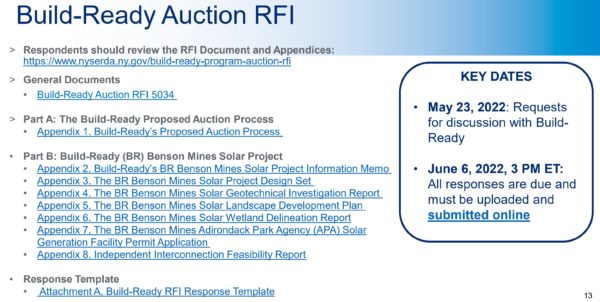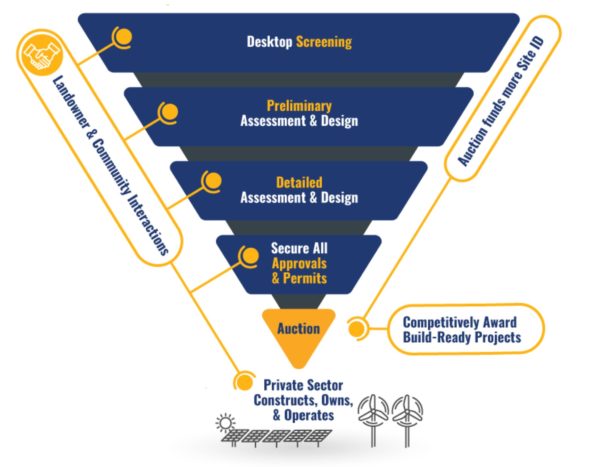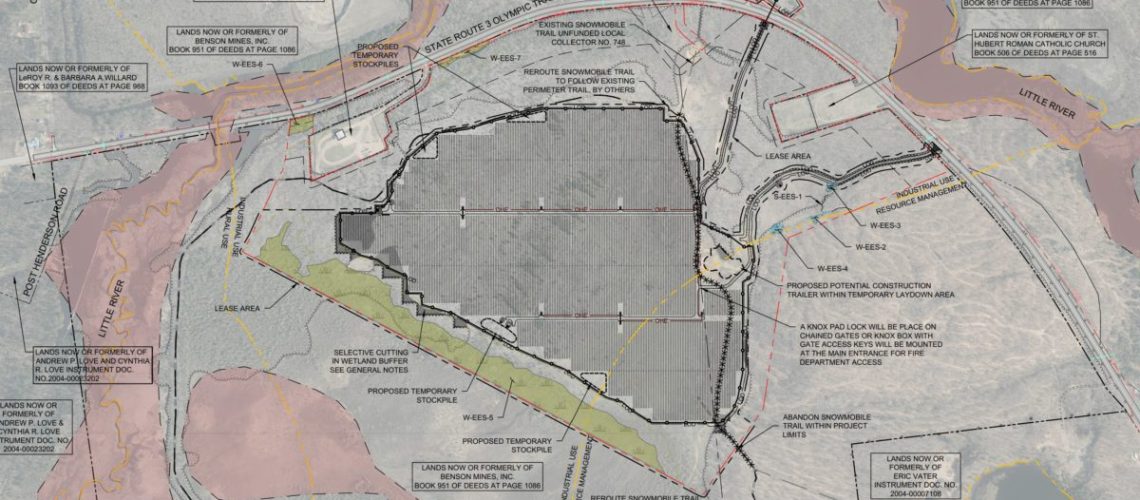New York is seeking public feedback on its Build-Ready program as the state readies its first in-house developed solar power project for sale.
June 2, 2022
New York state is seeking feedback on the processes involved in auctioning projects for its soon-to-launch Built-Ready program. The Request for Information (RFI) has set a comment response deadline of June 6, 2022, and is structured around the department’s first potential Built-Ready project – the Benson Mines Solar Project.
Following a public presentation, the New York Energy Research & Development Authority (NYSERDA) released the RFI presentation.
NYSERDA says the RFI aims to gather feedback from solar developers, owners, operators, and investors for three purposes:
- Better understand the most attractive time in the development process to auction a Build-Ready project.
- Foster significant interest from the private sector that results in competitive auctions and successful construction and operation of Build-Ready projects.
- Solicit interest in a voluntary Market Advisory Group (MAG) that the Build-Ready Program can engage from time to time to gather feedback.
The key page of the presentation (below) links to the main documents for review as part of the RFI.
Part A is the Built-Ready’s Proposed Auction Process, which is to be reviewed, while the Response Template is how those reviews should be communicated to NYSERDA by June 6 at 3 pm via the link that is also provided.
Part B contains documents related to the new solar power project being developed: the Benson Mines Solar Project. The various links to Appendices contained tens of thousands of dollars worth of solar development documentation.

Benson Mines’ Interconnection Application, noted above in Appendix 8. Independent Interconnection Feasibility Report, shows a cost of $1.97 million, and 18 to 24 months to complete the grid upgrades needed.
The Built-Ready program
The purpose of the Built-Ready program is to derisk solar development at sites that the State of New York deems highly desirable for deploying solar power.
First, NYSERDA has a rolling Site Recommendation Form in place, with the team ‘prioritizing the development of existing or abandoned commercial sites, brownfields, landfills, former industrial sites, and other abandoned or underutilized sites.’

Once a site is submitted, NYSERDA will first do a remote (desktop) screening of the site to determine the highest layers of viability – they are looking for wetlands, species considerations, or other digitally discoverable variables. After the screening, there will be further assessments and designs to determine financial viability, as well as other pre-screening techniques.
The next step is one that greatly affects how project development will occur. The state will take on the financial and time risks of getting landowners to agree to host a solar power project (i.e., gaining site control), gaining zoning approval from the local jurisdictions, and working through interconnection with the local utility or the New York ISO.
The projects will be sold at auction with a 20-year Renewable Energy Certificate contract. NYSERDA says they’re working through about 30 of the 5,000 initial site submissions. The group says most of the sites have 5 to 20 MW of solar hosting capacity.



